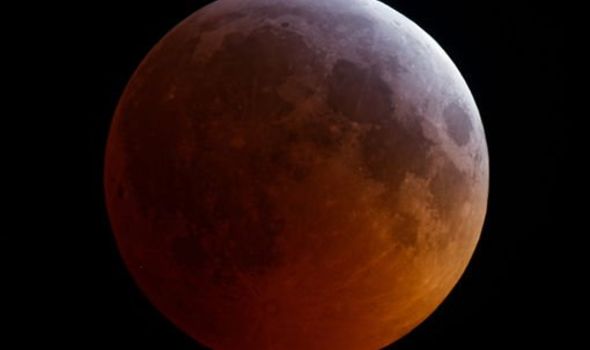Blue Origin
Wednesday 23rd January saw Blue Origin’s New Shepard rocket successfully launch eight different NASA sponsored satellites into orbit. This demonstrates the company’s trusted status as a partner of the US Government’s NASA organisation. It also continues the strong record of the company in using re-usable technology. Wednesday’s launch was the fourth flight of this particular rocket. Jeff Bezos commented via Instagram that this was achieved with “minimal refurbishments between flights”.
Re-using the same rocket for subsequent launches is Bezos’s strategy for keeping costs down. The intention is to make expensive space flights sustainable and therefore viable for commercial companies and future passengers.
It’s all excellent progress toward the eventual goal of putting humans into space: something which Bezos says will come very soon: “…we’re getting close to human [space] flight”.
NASA’s New Horizons sends back best images yet of Ultima Thule
New Horizons is so far away, and the transmitter signal is so weak, that data is being sent back to Earth very slowly indeed. It will take nearly two years to get back all the information received from its brief fly-by of the Kuiper Belt object Ultima Thule, which orbits well beyond the distance of dwarf planet Pluto.
The latest image confirms the “snowman” shape, which apparently shows two different objects lightly fused together. The image is at a resolution of around 135m per pixel. These show some interesting details. There seem to be a number of small pits, which could be the result of impacts, or possible some kind of process on the object itself. There is what appears to be a “collar” of ice where the two objects are fused at the ‘neck’ of the ‘snowman’, which is estimated to be around 21 miles (33km) long.
Another camera, whose data we have yet to receive, promises an even more detailed picture of about 35m per pixel.
The object appears to be a loose conglomeration of dust, rock and ice, held together by its own very weak gravity. It is interesting because it is suspected that it is largely unchanged since the very origin of the solar system. It is therefore expected to give us some indication as to how the planets and the solar system itself may have formed.
Interestingly, it seems to be very similar in construction to a typical comet. The previous European Space Agency (ESA) Rosetta mission showed that the comet 67P/Churyumov-Gerasimenko (the one which had a shape similar to a rubber duck) seemed to be made of much the same stuff. Other comets we have visited or photographed close up like Hartley 2 (NASA’s Deep Impact mission, 2010) and the famous Halley’s Comet (ESA’s Giotto, 1986) seem almost identical in terms of how they are made.
This is taken as evidence that comets are likely to be Kuiper belt type objects like Ultima Thule, which have been knocked out of their regular orbits by a collision, or by coming too close to a larger body and then being forced onto a new path taking them closer to the Sun. It is the Sun’s heat, burning off ice and dust, which causes a comet’s spectacular ‘tail’.
Meteor hits the Moon during Lunar Eclipse
Last week, people across the Americas and northern Europe were treated to the sight of a lunar eclipse. This occurs when the Moon is in the shadow of the Earth. This makes it appear much less bright to us here on Earth, and it takes on a darker, reddish hue.
But although this event was spectacular enough, it now appears that some eagle eyed observers saw the Moon struck be a meteor – the first time this has been recorded during an eclipse. The Moon continues to be bombarded by small objects quite regularly (every week or so), but it is very rare for anyone on Earth to actually see this.
But the combination of the Moon being much darker than normal, and the fact that millions across the world were watching through zoom lenses and telescopes, means that people have actually seen this event.
Flashes of light from any meteor impact are extremely faint and brief, so at first it was thought that it may be a photographic error – a pixel out of place. But several images taken at the same time showed the same momentary flash, in the same place on the Moon’s surface.
Now the search is on to try to find evidence of this fresh impact on the surface of the Moon itself. NASA’s Lunar Reconnaissance Orbiter (LRO), which has been in lunar orbit since 2009 is being directed to look for this evidence. It can’t change its course, but when it passes over the potential impact area, its data will be intensively analysed to see if it can detect the resulting crater. Initial estimates suggest the meteor was about the size of a football, and would have left a crater of about 30 feet across.
Vintage Black Arrow rocket returns to the UK
With all the excitement of new rocket launches seemingly happening every week from the new commercial space companies, it was interesting to recall the days when the United Kingdom was at the forefront of space technology.
Developed and tested on the Isle of Wight, the UK Government’s Black Arrow programme successfully completed four rockets between 1969 and 1971. The third flight was the first and only time the UK successfully launched a satellite into Earth orbit.
But with the United States and Soviet Union investing vast sums on the space race, it was felt that it was futile for the British to attempt to keep up, so the programme was then cancelled. Perhaps it was decided that the supersonic airliner Concorde was a better use of our limited resources.
The remains of the rocket have lain dormant at its crash landing site in the Australian outback for nearly fifty years. The ravages of the climate and occasional vandalism have taken their toll, but the remains of the rocket have now been returned to the UK.
Once suitably refurbished, the rocket will go on display at Space Technology company Skyrora’s headquarters, near Edinburgh, in Scotland.
Skyrora is the UK based company which is currently working on its own new rockets: Skylark Micro and SkyHy. It is expected that these will be launched from the UK Space Agency’s proposed new vertical launch spaceport in Sutherland in the north of Scotland.

